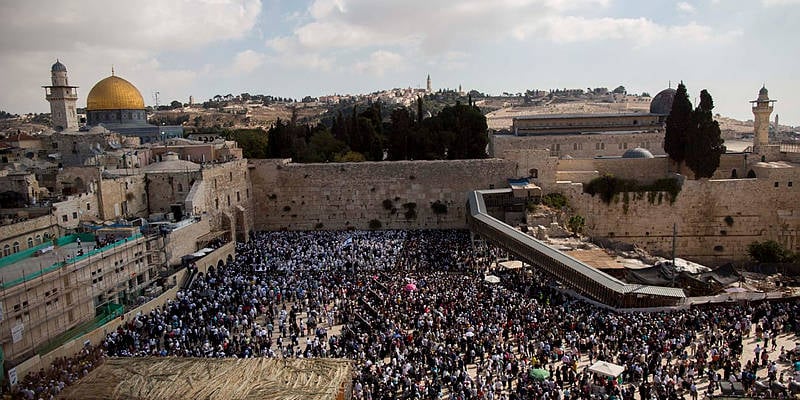During Chol Hamoed, the interim days of Passover, life in Israel takes a turn towards rest and relaxation, and people spend time with family and friends.
Schools are closed and many people work fewer hours, if at all. As a result, the trains, buses, and roads are full of people touring the country.
In Tel Aviv, the beaches are filled with people, as well as the cafes along the city’s promenade. The famous Dizengoff Shopping Mall in Tel Aviv is also packed with people taking advantage of the holiday to buy clothes, often on sale at this time of year.
Many Israelis flock to Jerusalem for the holiday. There are reduced prices and special tours in many of Jerusalem’s museums. They offer reduced fairs for children and free admission for all during part of the holiday. The City of David Archaeological Park, which highlights the original city of King David, is offering many special Passover tours as well.
Yet even more Israelis visit the Kotel, also known as the Western Wall, in Jerusalem, which is the outer retaining wall of the Beit HaMikdash, the Holy Temple, where Jews traditionally offered sacrifices to God, and which was destroyed almost 2,000 years ago. This site has become the destination of Jewish pilgrims and the center of Jewish prayer for millennia. Crowds around the Kotel over Passover are huge, as are the shops within the Old City.
Hundreds of thousands of Israelis visit national parks, forests and biking trails throughout Israel. Famous Mount Hermon in the Golan Heights is a favorite and often is still snow-capped during Passover. Every hotel in the Galilee area is usually booked. Gamla, Nahal Amud, and Tel Afek in the north are very popular destinations.
Thousands also visit places in the south, such as Eilat, Masada, and Ein Gedi. Indeed Israelis can be seen all over the country camping out, hiking in national parks, having picnics in archaeologically rich areas or enjoying a barbecue.
By: United with Israel Staff


